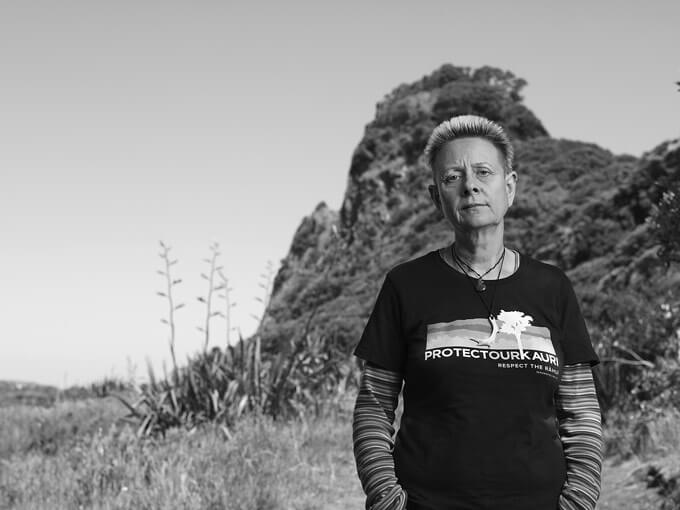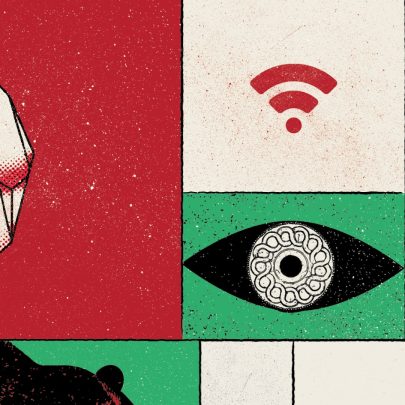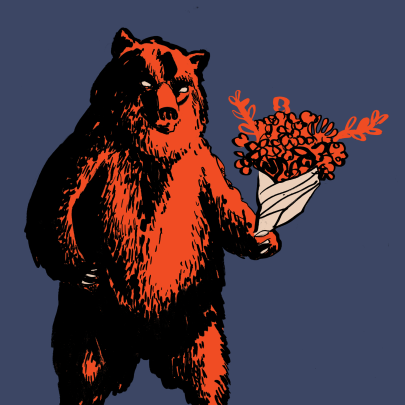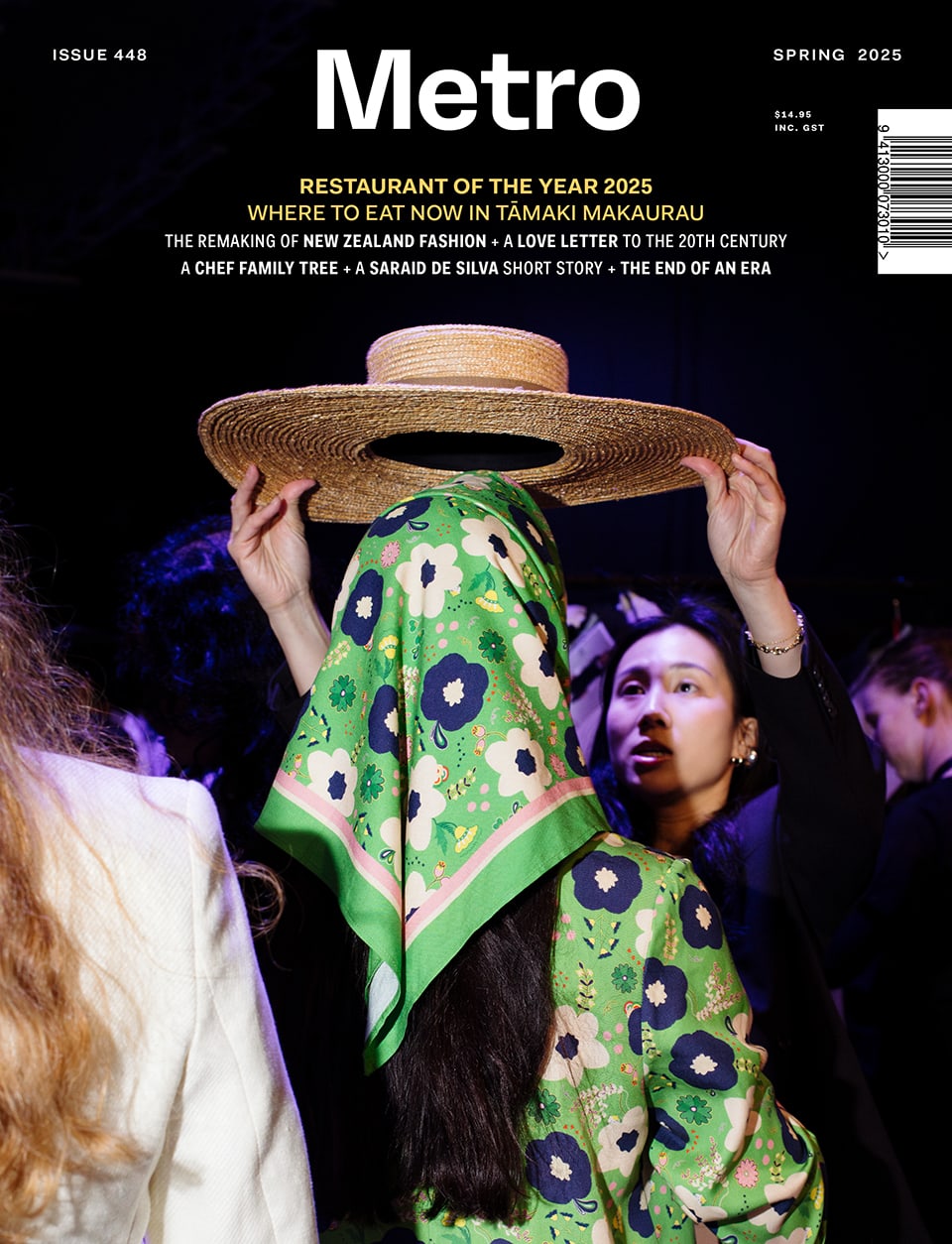Feb 21, 2019 Society
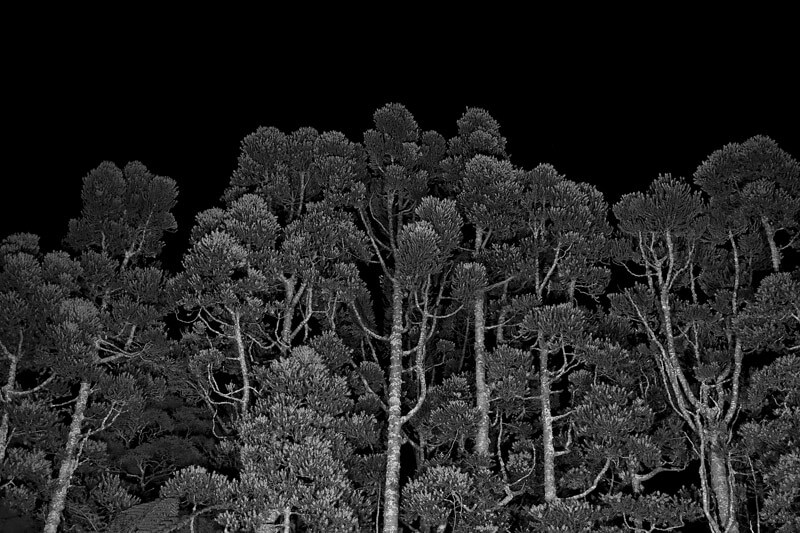
Kauri survived the extinction of the dinosaurs and the sinking of a continent, yet today stand on the brink of annihilation. Why has the official response to dieback disease been so weak and disorganised?
It’s a new death sentence on these glorious sky-reaching treasures of the New Zealand northern bush. Kauri dieback is sweeping through the northern forests and into the Waitakere Ranges and the islands of the Hauraki Gulf. It’s as great a menace as the ruthless millers were in the last 200 years, but unlike them, it cannot be stopped. At least, not with our current knowledge.
Where greed drove the saw blades, now a water mould is devouring the kauri that remain. It has only recently been given a name: Phytophthora agathidicida. The last word translates as “kauri killer”.
I can see the stand of trees I want to get to long before I reach the plateau. When I finally drag myself into the clearing, exhausted, I feel I’m in a sacred grove. There are at least 60 trees and they are awe-inspiring. This is the New Zealand bush at its best. The only sound comes from tui high in the uppermost branches.
Read more: Zealandia: The story of the hidden continent beneath New Zealand
I feel I’m in a temple, ancient and totally transforming. Maori creation legend has it that these magnificent natural pillars pushed apart the earth and the sky and let in the light. It was into forest groves that the Greeks went to party and to sacrifice. They knew the trees conveyed something significant, as did the Romans, the Celts and the Druids.
Their legends and stories got transferred into our nursery tales of forest horrors — Hansel and Gretel, Little Red Riding Hood and countless others. It continues today with Avatar, the greatest money-making film of all time. All these stories make a real connection between trees and people.
It deeply concerns me that the great trees are dying, and it should concern us all. I’m going in search of answers. My journey to understand what kauri dieback is and what we are doing about it will take me around the country, to Northland and through the forests of Great Barrier and the Coromandel. I will talk to people from the scientific community, Auckland Council, tree experts and the large number of perhaps-crazy but well-meaning advocates of new approaches to halt the disease.
The common threads will be bewilderment and despair, but they are wrapped around a deep commitment to keeping the ancient forest gods alive.
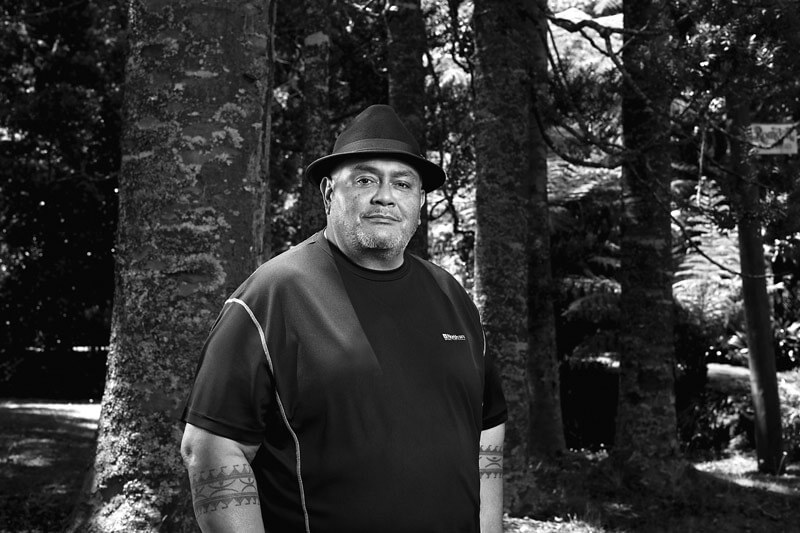
One of those fragments was Zealandia, a continent-sized life raft that soon sank into the ocean. New Zealand, we have recently found, is no more than the highlands of that sunken continent. The trees flourished here, deep in the South Pacific, and became the largest and most spectacular of their genus.
Kauri stood in a landscape that felt no human footfall until less than a thousand years ago, for them less than a single lifetime, where only birdsong disturbed the silence of the great forests. It was a unique ecology, ruled by the great trees and the birds.
When the Maori settled here, they recognised the kauri as a priceless resource and made many trees tapu. They were felled for the giant waka taua, the war canoes that Maori held at the very heart of the tribal taonga.
The sheer size and weight of the trees meant that, for Maori, the forest giants were extremely difficult to bring down, and so they treated the immense effort with significance and strict tapu. The trees were felled over two or three months, using large stone adzes and fire. The massive trunk was then hollowed on site by master carvers. Finer details were added by the most superb indigenous craftsmen in the Pacific.
The kauri formed not only the largest aspect of Maori material culture, but also the smallest. Maori chewed on fresh kauri gum, used it to start fires and bound it with flax to make torches. The rich resin also literally drew the lines of their identity and spirituality: burnt and mixed into a paste with dog fat, it gave the rich blue-black essence of their tattooing, captured so well by Goldie’s portraits of Maori.
Europeans initially had little use for kauri gum, until it was found to make an extremely tough varnish. It suddenly became the country’s most valuable export. Maori and Pakeha combined their resources to hunt for it.
At first, the gum was found on the ground in plentiful supply, but after this was collected, people probed for it underground with metres-long gum-spears and “Skeltons”, blades that cut through soil and root. By the 1890s, when 70 per cent of the varnish made in England used kauri gum, the land here was being ravaged with these weapons by a small army, up to 20,000 strong.
The kauri were even bled for their gum, a practice that was endemic in the Waitakere and Northland forests during the late 19th century. Teams of workers would climb the trees using ropes and spiked boots and then cut them open. The resin would pour from the trunk. It was recovered once it had set, which could take up to a month. The practice was banned in 1905, because it was killing trees. There weren’t many left by then.
Read more: The biggest biosecurity threat to New Zealand? Humans
Maori had been limited in the ability to bring down kauri and use the timber, but Europeans were not. From the late 1700s, Europeans sought it for sailing-ship spars. Soon, its qualities made kauri the timber of choice for all sorts of uses. Hunger for the wood in those tall, straight and massive trunks devoured every available tree in Northland over the next century or so.
The farmland that you drive through heading north was once flourishing kauri forest, 15,000 square kilometres of it. The millers cut it down with amazing speed. Every year, some 10,000 logs awaited export from the Kaipara and the Waitemata. The ports were surrounded by mills on the land and by ships moored by the hundred to seaward, waiting to carry the timber away.
Many of the kauri that this intensive industry failed to devour were destroyed by forest fires in the 1880s. The greatest occurred in the vast Puhipuhi Forest , south of the Bay of Islands. Some 6900 hectares there were bought from Maori, and this included the country’s state forest reserves. The first fire in Puhipuhi, in 1881, raged for seven years, destroying 4850 hectares of bush and an estimated 708,000 cubic metres of kauri timber. It was purposely lit.
Farmers wanted the land cleared. The “bloody bush”, as it became known to the New Zealand psyche it encumbered, simply had to go. The fires would burn for months. The giant kauri were sacrificed for the establishment of farms.
It took tens of millions of years for nature to create the great New Zealand bush. It has taken us a century and a half to destroy it. Only one per cent of the original great kauri forests of Northland and Auckland now stand. And they are dying.
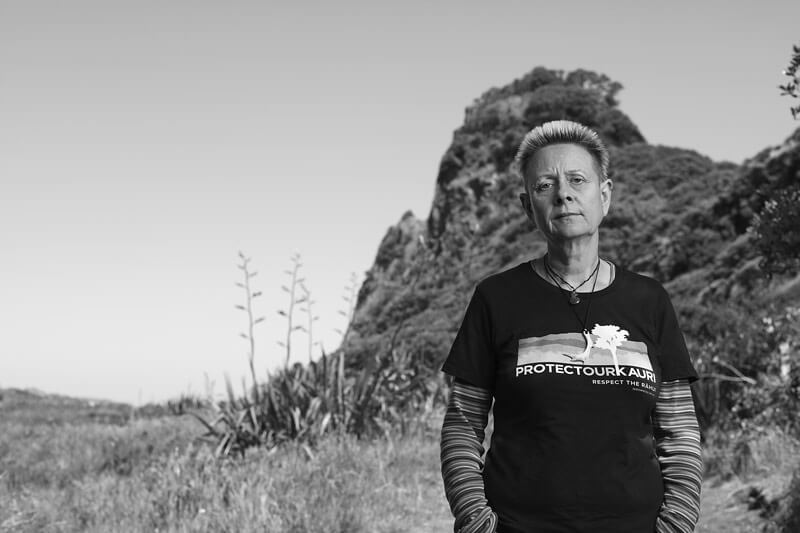
It was back in the early 1990s here in West Auckland that I first became aware of kauri dieback, when I was mayor of Waitakere City. Residents in Titirangi were reporting to the council that their trees had suddenly started to fall ill, shedding leaves and the bark showing signs of rapid deterioration.
Waitakere City Council was the first to raise awareness of the dying trees. It started to work with Dr Ian Horner, a plant pathologist who was then with the old Department of Scientific and Industrial Research. He did some research at Huia that showed afflicted kauri responded well to phosphate — “still one of the most promising tools we have,” he has said recently.
The council then backed work by Lee Hill and local identity Trevor Pollard. With a small team they started treating the trees with the low-toxicity chemical, which doesn’t accumulate in the environment. Over the last five years, it’s been shown to keep trees alive, but it’s certainly not a cure.
Horner, Hill, Pollard and Barton later started the organisation known as Kauri Rescue. It began small and grew into a desperate community-based rescue team.
Barton came to New Zealand in 1999 from her native Wales with a degree in physical geography and a PhD in estuarine sediment transport processes. Her expertise fits perfectly with the dieback scourge. She has worked with the Tree Council and the Friends of Regional Parks and is chair of the Titirangi Residents and Ratepayers Association.
We talk about the kauri grove outside McCahon House, just a kilometre away down in French Bay. McCahon painted some of his most significant Titirangi works in his unassuming family home and garage. The kauri grove outside the back window became an inspiration; the paintings form part of the finest McCahon collections.
Barton is optimistic about saving the grove, but she is furious at the lack of support councils around the region are giving the problem. Northland, Waikato and Coromandel come in for serious criticism. Their lack of passionate concern infuriates her. She believes Auckland Council has turned itself around and is now doing more than any, but she has concerns around the limitations and the politics of process and policy that get in the way of action and commitment.
She says it took Auckland Council nearly a year to listen to Te Kawerau a Maki — the local iwi — about placing a rahui on the Waitakere Ranges. This spiritual practice asks people to respect tradition and not enter a specific place. It’s often used after a drowning on a beach. Although not enforced by law, it is compelling and makes a difference.
Later, at the Te Paki o Matariki: 160 years of Kiingitanga exhibition opening at the Auckland Museum, I catch up with Te Warena Taua of the Te Kawerau Iwi Tribal Authority. He advises the Maori King on historic protocol and is an old friend. We go back to the rahui that was placed on Karekare Beach in 1994 to protect the wanton collection of shellfish and is still in place today.
Taua and I talk about the spiritual aspects of the rahui and the plight of the kauri. The forest is a sacred space, he says. It is not for running or mountain biking, but somewhere to be significantly aware of nature in its fullest form.
Last year, I watched Taua as the iwi came on a cold winter’s morning to the Cascade Park. He laid his hands on the dying giant kauri affectionately known as Aunt Agatha as the rahui was placed on the ranges. It was an important moment, but the council appeared reluctant to provide any backing to the rahui.
It claimed there were too many tracks to make it feasible and that it was too difficult to enforce, but Taua and his tribal authority’s executive manager, Edward Ashby, persisted. Councillor Penny Hulse, who represents West Auckland, eventually led the council into backing the rahui. She took a lot of abuse.
The rahui was the turning point, the moment when people realised there was something big going on. It provided the momentum that finally got the council into gear and moving on the issue of dieback, and it was all the doing of Te Kawerau a Maki.
The iwi are now taking a Waitangi Tribunal case to the government demanding immediate action. The case is based on the lack of government action to support Maori on the dieback issue.
Like Barton, Taua believes both the council and government have failed appallingly in communication with his organisation. I find it a common complaint. Everyone feels left out of the loop.
There appears to be a silo mentality at the council and within the Ministry for Primary Industries (MPI).
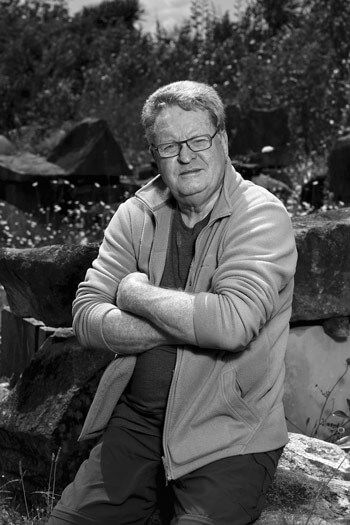
John Edgar, environmental warrior of the Waitakere Ranges and president of the Waitakere Ranges Protection Society, told me his group is vital to the protection of the ranges but struggles to be included in the loop. “They call us when they want us,” he says. “When the painted apple moth needed dealing to, which we agreed had to happen, we were flavour of the month, but now we feel we have been thrown under the bus in their communication process.”
On the day I speak to Taua, the council reopened Goldie Bush Walkway, between Muriwai and Waitakere, without any consultation with the iwi.
I’m the one who tells him the news, after reading of it in the paper. He is disbelieving. The lack of communication is insulting, he says.
It’s part of a widespread complacency. There has not even been a public information campaign about dieback, just seven signs at road junctions. They’ve been up for seven months and been vandalised. No one is listening.
Scientists and environmentalists agree that the kauri killer is soil-transmitted. That’s the point of the rahui, the closing of the tracks and those signs pleading for boot-cleaning. It’s an attempt to literally stop the march of this creeping horror that infects the trees long before we realise its existence.
I visit Sir Rob Fenwick, the founder of Living Earth, and we talk about how the disease is transmitted from tree to tree and grove to grove. Fenwick is one of New Zealand’s finest environmentalists. His donation of land for a magnificent public walkway on Waiheke Island is an important gift. He has spent a lifetime grappling with issues around the land and environment.
We talk of the microscopic water mould Phytophthora agathidicida, whose spore is what most now believe creates the disease. The spore is water-borne and thrives on rain and the mud and slush kicked up by pigs, trampers and walkers. Under the microscope, you can see that Phytophthora has a tail. The tail can move it through the water film in heavy clay and mud at up to three metres per year.
The problem, Fenwick tells me, is that there are up to 180 varieties of the spore. We’re up against myriad possibilities, and it could be the mould was infecting the trees years before we became aware of its existence.
Fenwick reckons it’s inevitable kauri dieback will spread across New Zealand. It may take a few decades, it may take a century, but extinction is a reality, apart perhaps from on a few offshore islands. The other possibility is that this generation of New Zealand scientists get their act together and start working collaboratively. Fenwick is emphatic that every possible scientific option must be researched.
He is incensed by what he calls the bureaucratic mismanagement of the government’s science effort to understand and control the disease. He’s staggered that for all the funding invested in kauri dieback by this and the previous government, there is still no agreed scientific plan.
Numerous agencies are working on dieback solutions, among them MPI, which manages biosecurity and forestry, the Department of Conservation (DoC), which has the specific aim of protecting and restoring species, and Manaaki Whenua — Landcare Research, which focuses on biodiversity and the environment. But there is no consensus on a plan.
Read more: Ministry defends kauri dieback programme performance
Fenwick asks me to talk to Sir Peter Gluckman, the former Chief Science Adviser to the Prime Minister. Gluckman is now setting up a think tank at the University of Auckland to consider long-term issues where evidence, policy and society interact. He’s also open with his opinion about kauri dieback and what is not yet being delivered by the New Zealand government’s agencies.
Gluckman frankly agrees with Fenwick, saying that we have been too slow in developing the technical agenda on dieback. He believes we’ll only be able to beat the extinction of kauri through scientific discoveries, and we have not reached any decent scientific level of understanding on it. It’s more than the soil and the ground, he says. It’s much more complex.
He’s gravely concerned that the scientific level of engagement is far below what is needed. Gluckman acknowledges the essential funds that are becoming available from both the council and central government. However, in a rather underfunded science system, this may have led to a focus on resource capture rather than creating a collective strategy to make real progress. He says this is an area where the science needs to be planned in a much more open and transparent manner to maximise the pace of finding answers.
Things are now happening, of course. Auckland Council is putting in $300,000 per year for the next 10 years, much of it going on track upgrades. At the end of November, Research, Science and Innovation Minister Megan Woods announced a surge funding package of $13.75 million over three years for research to combat the spread of kauri dieback and myrtle rust.
The council is also employing a large number of biologists and scientific advisers. In November, the Marsden Fund, administrated by Royal Society Te Aparangi on behalf of the government, agreed to award Professor Michelle Glass and her team from the University of Otago $939,000 to tackle the problem of kauri dieback.
Her approach is modelled on human drug discovery. Glass will study the role of receptor proteins in the migration and the infection of spores. She will go on to identify how these spores interact with proteins and hopefully will develop a treatment that will give an answer to the dieback problem.
Gluckman reckons the prompt implementation of lots more of this sort of deep and open science is needed. He also thinks we may need to have conversations about whether genetic technologies will ultimately be needed to deal with the Phytophthora.
The fact is that kauri will be unlikely to become resistant to the dieback because they now have such a small gene pool. That combined with their lengthy life-cycles — kauri can live for more than 2000 years — means their ability to evolve a resistance to disease is extremely limited.
It’s possible that we could edit the DNA of the kauri, proofing it against dieback. We could step in, right into its genes, and give it what may be its only chance to survive extinction.
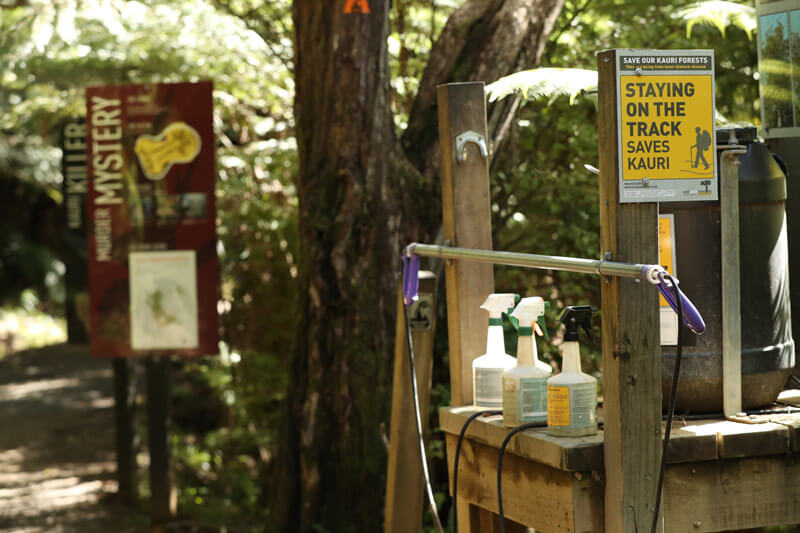
Kauri come from a family called Araucariaceae, and Agathis australis is this country’s oldest surviving species, but others of the kauri genus exist in Australia, New Guinea and South America. Some 22 species are scattered throughout the Southern Hemisphere, mostly in the south-west Pacific.
The old Forest Service, it is said, was keen to find out how other kauri species would survive in New Zealand. Kauri from the Pacific were planted in the Waipoua Forest nursery, north of Dargaville, and it is widely felt by those in the forestry and horticultural industries that the origins of dieback were in infected seedlings. Early kauri logging in the forest then likely exacerbated the spread.
I find cruel support to the theory when I make a pilgrimage to Tane Mahuta, the icon of Waipoua Forest. If there is one tree of significance, then it is this one.
Tane Mahuta, the “lord of the forest”, is considered the largest standing kauri tree in New Zealand. It is the Methuselah of the forest and although it’s not the biggest living tree in the world — generally acknowledged to be the “General Sherman”, a Sequoia gigantean in Kings Canyon National Park in California — it is arguably the most famous.
The tree has a girth of 13.8 metres and its height to the first limb is a staggering 17.7 metres — that’s five storeys up. It is one of three giant trees in close proximity, but larger trees were felled in Northland in the 19th century.
On the approach to Tane Mahuta I see kauri suffering from serious dieback. Tane Mahuta itself is now under threat. The disease has already killed many kauri within 100 metres and the other forest giants, too, including the magnificent Te Matua Ngahere.
Ian Horner, who was behind the phosphate treatment for dieback in the 1990s, is now leading a team from Plant and Food Research in a desperate attempt to save Tane Mahuta. Meanwhile, as the year ends, DoC is closing some tracks in Northland and partially closing others in Kaitaia, the Kauri Coast, Whangarei and on Great Barrier Island.
Back from Waipoua with a sense of sadness, I take a drive from Piha to Huia via Titirangi with Rodger Curtice, horticulturist, landscaper and tree and plant expert. He once had the largest macadamia farm in New Zealand and knows pest and plant diseases in depth. Phytophthora agathidicida in avocados has been devastating for that industry.
Curtice wants to show me some trees he thinks are worth saving and to tell me how it could be done. As we make our way through Titirangi I see large trees, some between 500 and 1000 years old, next to houses, roads and schools. They don’t seem to be affected by close proximity to civilisation and many even seem to be thriving. Curtice, who knows about these things, points out that many of the pines are diseased and I see he is right.
On our way to Huia, I have new eyes looking at the bush that goes from big ridgeline kauri in the dying stages to healthy trees on the lower slopes. To me it’s a clear illustration that the dieback spore travels down the slopes of the bush hills, with the mud and water, to where the lower trees await their fate.
Curtice believes the survival rate among kauri will be akin to humans during the Aids epidemic. I’m reluctant to draw such parallels, but it comes down to research and we’ve lost a decade in investigating the spore that’s killing kauri. It’s another example of the serious lack of urgency in addressing dieback.
We must immediately start a replanting programme, Curtice believes, planting young kauri seedlings everywhere. From such a rapidly enlarged population there may be survivors who are naturally resistant to dieback and they’ll take over from the old population. It’s a sort of natural alternative to Gluckman’s suggestion of editing the kauri genetically, except we’ll have to wait 200 years to see if it works as new forests are created.
What’s at stake is not just the kauri. The great tree is a keystone species, the anchor of a small ecosystem. At least 17 other plant species depend entirely on kauri, all of them unique to New Zealand. If the kauri is lost, then we will lose them all.
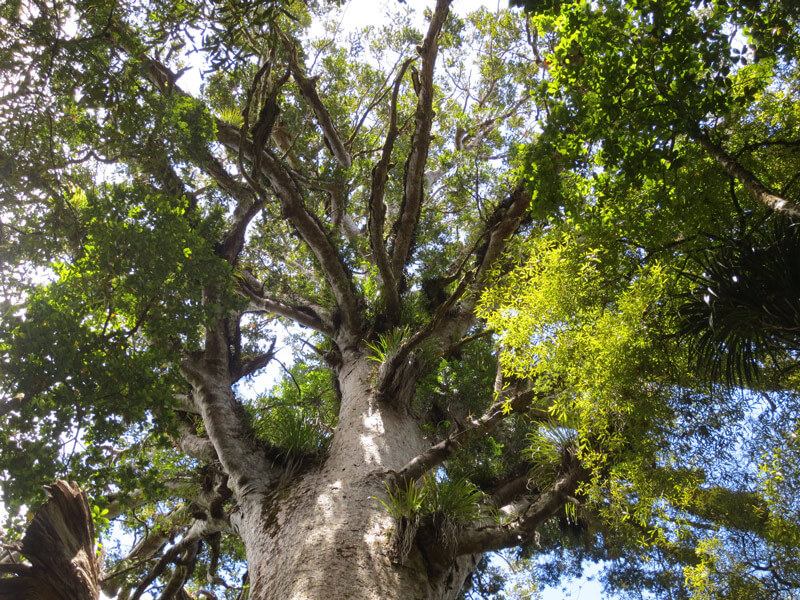
Between the kauri’s outer layer and its inner core is one of the most complex and beautiful systems in the whole of nature. Its ability to draw water from the ground is almost unparalleled. Around the roots is an unusual feature: an immense litter mound, often three metres deep, known as pukahukahu.
The kauri is also a deadly killer of rivals. High in the branches of most giant kauri are massive bundles of epiphytes. These often weigh up to 50kg and are bombs blown down in wind to crush surrounding trees and plant life. Don’t be under them in a storm — they are incredibly effective at keeping the kauri in their isolated groves.
The trees also modify the soil around them by making it acid and leaching out the nutrients so other trees can’t survive. This is how kauri came to have a unique assemblage of species that live with them. They use mycorrhizal fungi in their roots that fix nutrients in order to out-compete other canopy trees and dominate the forest.
This is part of a new and eye-opening science that’s been emerging all but unrecognised over the last 30 years. Only recently has it come to mainstream attention, notably with Peter Wohlleben’s bestselling book, The Hidden Life of Trees.
Wohlleben is a German forester with a gift for popular writing on ecology. He’s referred to himself as a translator of this new scientific understanding. “Trees are connected by the roots,” he summarised in a 2016 interview supporting his book, “and where the roots don’t reach, we have a fungi network underground, a fungi network that works like a ‘wood wide web’.”
Suzanne Simard, a Canadian professor of forest ecology, has been at the forefront of research into what she describes as this “massive below-ground communications network” by which trees interact, compete and co-operate.
“Now there’s tons of evidence,” she said in a radio interview last year, “showing that plants are connected, in many different kinds of ecosystems around the world, below ground by mycorrhizal networks.”
The research suggests trees are like a superorganism, akin to ant or bee colonies. “Intelligence” is even being used to describe what is now being seen. Trees can recognise kin and “friend” species, favour them, and even increase their resistance to future stress.
Forests are “complex systems of hubs and networks,” according to Simard, whose research helped identify the “mother trees” at the heart of the system, and therefore deeply vulnerable to major disturbances.
“You can take out one or two hub trees,” she says, “but there comes a tipping point. Hub trees are not unlike rivets in an aeroplane; you can take out one or two and the plane still flies, but you take out one too many, or maybe that one holding on the wings, and the whole system collapses.”
I think of the Skeltons tearing root systems to shreds, of trunks being deeply cut to bleed resin, of an entire society of ancient trees being clear-felled in what for them was an instant. It’s unbearable.
I wonder, too, if perhaps this same natural “internet” might reach out more distantly, and not only to trees.
For Maori, kauri are closely associated with whales. In ancient lore the two giants among living things were made at the same time by Tane and had a special closeness. The whale, it is said, even gave its skin to the kauri as a final act of friendship before leaving the land to live in the sea. It did so because the whale knew that one day Maori would come and cut down the kauri and make waka.
Dr Karl Johnstone and I go back to November 14, 2003, when 12 sperm whales were discovered stranded between Karekare Beach and Whatipu, an awesome and tragic sight. The largest whale was donated to Te Papa and under the supervision of Johnstone was stripped and cleaned and beautifully mounted to create one of the finest whale skeleton exhibits in the world. It has now travelled around the globe and been seen by three million people.
Johnstone, former director of the New Zealand Maori Arts and Crafts Institute, travels the globe talking to indigenous people uncovering legends and stories. Surprisingly, communication between whales and large trees comes up regularly in these ancient tales.
We have come to better understand the vocalisations of whales that roll through hundreds of miles of ocean. Now science has revealed that, through their root systems, trees can hear and even hum.
It is profound that scientific understanding is proving ancient conceptions of connectedness. It’s interesting to consider how far and deep that may go.
The last kauri came out of the Waitakere forest in 1940. Alfred Reed interviewed some of the old saw millers of the north in The Kauri, published in 1967. I thought by chance there may be one or two still around. After a tough search I finally found one of the last surviving tree millers, someone who had actual first-hand experience of felling these forest giants.
Bill Curry worked with some of the legendary millers like Tudor Collins, Joe Gasparich and George Murray and his teenage sons Ivan and Jack. There is a famous photograph of the Murray family. They represented the old bushmen. George stood two metres tall, as did his sons.
At 97, Curry is frail but very clear in his memories of working in the Northland and Waitakere bush in the 1930s. He tells me they would take time to select the tree, maybe two or three days, and then carefully size up how it was to be cut and how it would fall.
Bringing down such a giant accurately was part art, part science and all tough work. The trees were unbelievably huge, says Curry, “but we got to know them and we respected them”.
“We knew we were ending the life of something that had been around before New Zealand was discovered, and historically they had come out of the ground when Christ walked the earth, but our mission was to deliver the log into the gully to be pulled by bullocks into the road or to the dam below the forest.”
He remembered that a big solid kauri would take three days to bring down. An uncanny silence would prevail before the tree fell in a deafening crash. “No one would speak for minutes when we completed the act.”
The bushman’s life was tough. Axes were sharpened to a razor-fine edge. The horn blown by the mill cook to summon the men for meals was also used to get everyone to return to camp to assist someone who was injured or crushed by a tree. Curry recalls a miller at Karekare being crushed and his mate using a kauri jack to lift the tree off him. The soft soil saved his life. The kauri jack was used extensively to lift the tree trunk so that a two-handed saw could move freely through the tree.
I asked Curry if he recalled any diseased trees. “Bloody hell, no. They were all as healthy as you and me.”
The kauri has survived the extinction of the dinosaurs, the break-up of Gondwanaland and the sinking of a continent, but this was across geological time. The great and glorious forestation of New Zealand was destroyed wantonly, burnt and butchered, in little more than a century.
The kauri are deeply connected to each other in ways we are only just coming to understand. It seems possible, to me at least, that they are dying of grief or shock in the wake of the sudden loss of almost all their number. Rapacious clear-felling certainly left the kauri with a limited gene pool to withstand a challenge from a microscopic but vicious attacker. Their very longevity is also now a handicap in adapting to a recently introduced killer.
We need to be doing more and better. The government, its agencies and the councils are simply not putting enough resources and energy into finding answers. There is a lack of communication, and of organisation. We need to be listening to Te Kawerau a Maki and to the country’s leading scientists and backing them. A rahui of barbed wire and track closures is simply holding the line.
Our nation was built by kauri in more than the literal sense. Kauri timber and kauri gum were more important than gold and wool in sustaining the initial growth of New Zealand. Now we contemplate the greatness of what was lost and think it wantonly irresponsible. The least we can do is maintain the few forest giants we have left. It is our duty both to a treasure that we spent too freely, and to the future.
Follow Metro on Twitter, Facebook, Instagram and sign up to the weekly email for more on Auckland issues.

